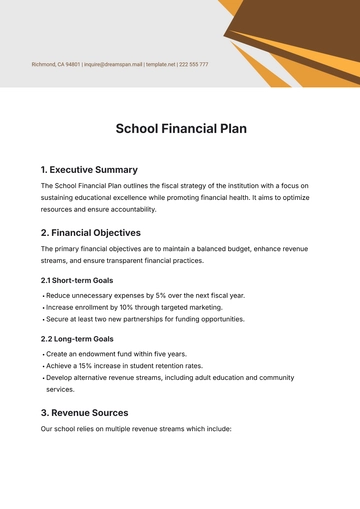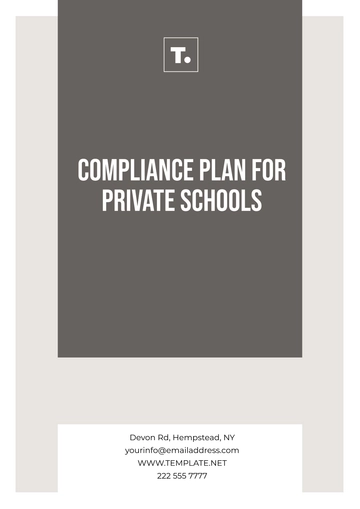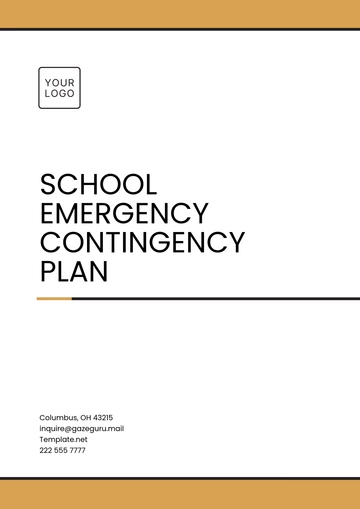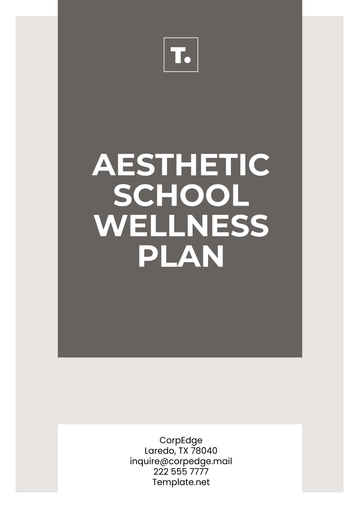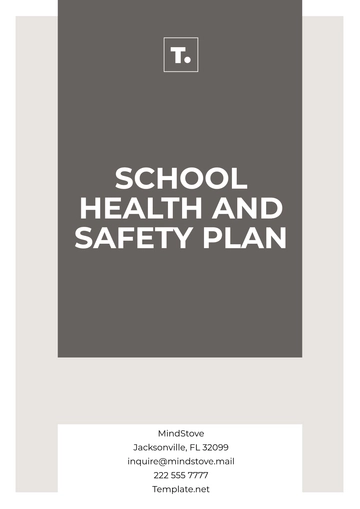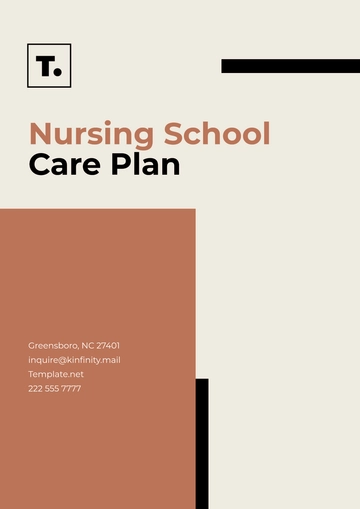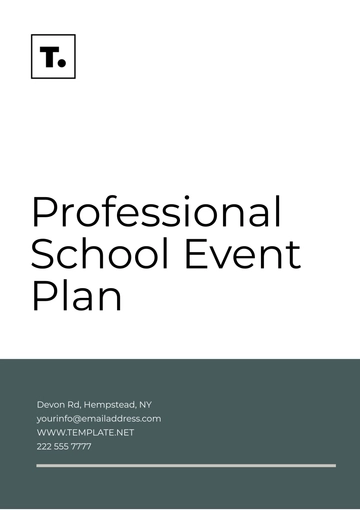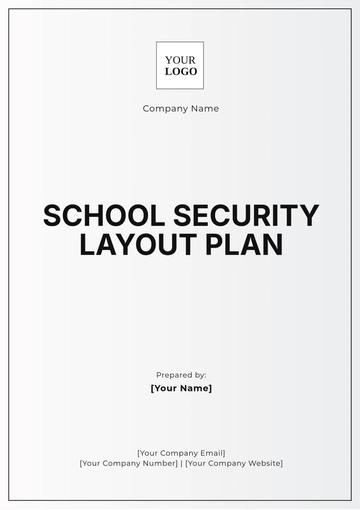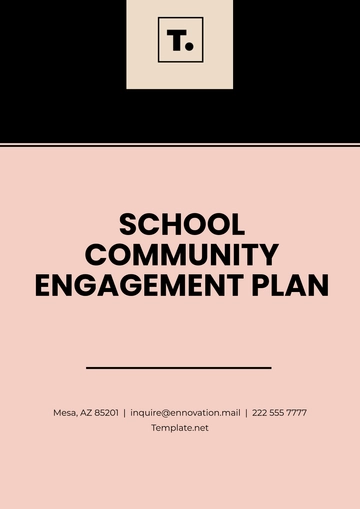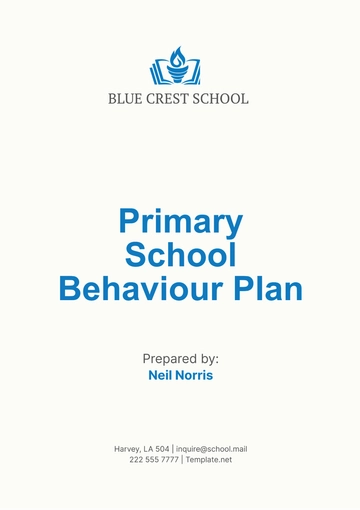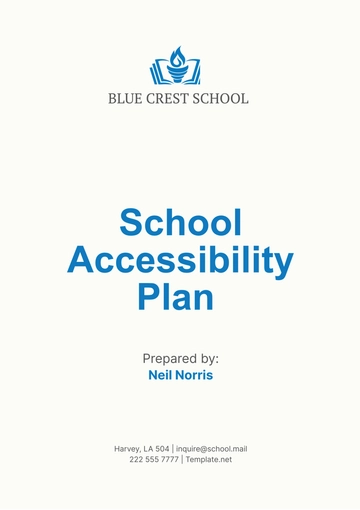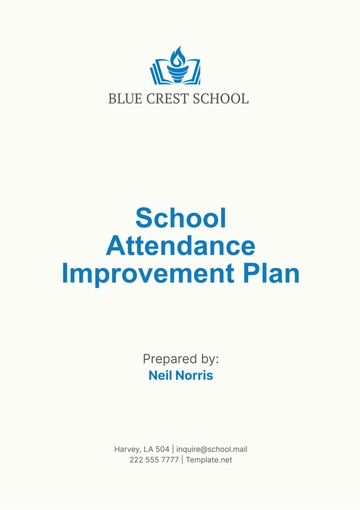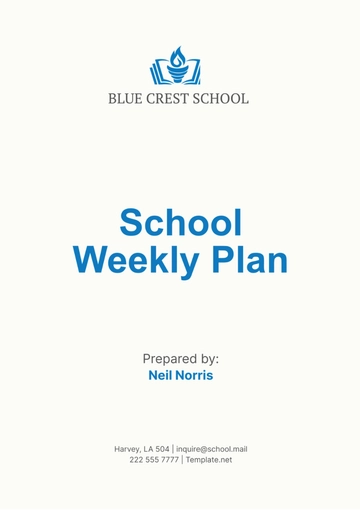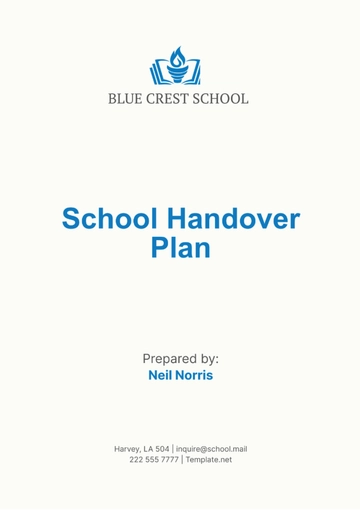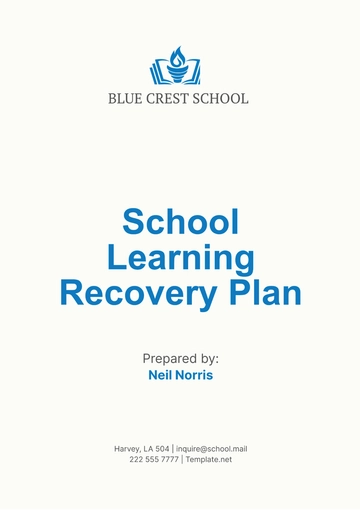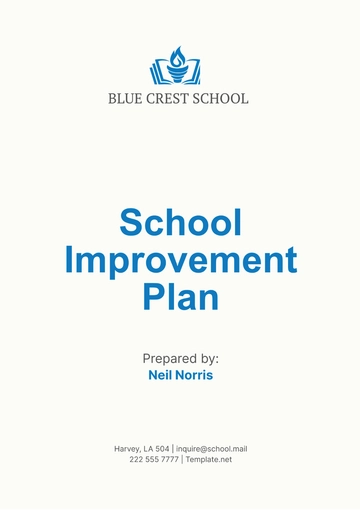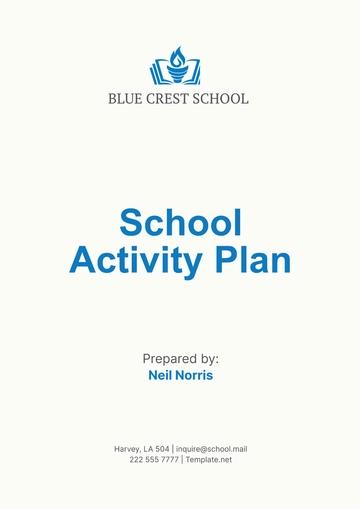Free School Improvement Plan
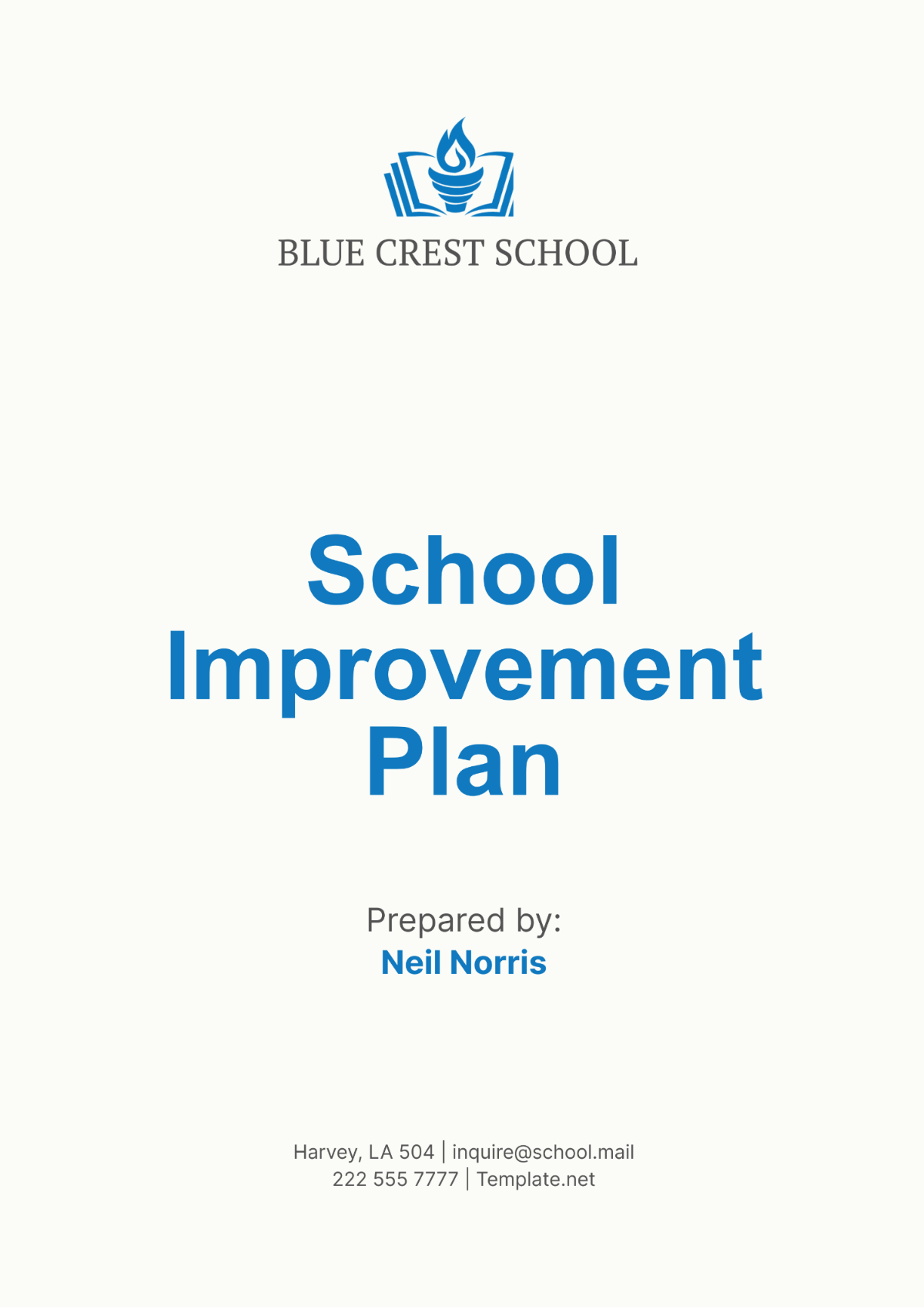
I. Executive Summary
The purpose of our School Improvement Plan is to enhance the academic performance, school climate, and overall success of our students. By implementing targeted strategies and fostering a culture of continuous improvement, we aim to create a supportive and high-achieving educational environment. Key strategies include data-driven instruction, professional development for staff, technology integration, and community engagement. Expected outcomes include a 10% increase in standardized test scores, a reduction in disciplinary incidents by 15%, and improved student and parent satisfaction ratings.
II. School Profile
A. School Overview
Our school serves a diverse student population, providing a comprehensive education that prepares students for success in higher education and beyond. We emphasize academic excellence, personal growth, and community involvement. Our dedicated staff is committed to fostering a nurturing and challenging learning environment.
B. Demographic Data
Our student body reflects a rich diversity in backgrounds, languages, and experiences. The following table provides an overview of our current demographic composition:
Category | Percentage |
|---|---|
Total Enrollment | 1,200 |
Ethnicity | |
- African American | 35% |
- Hispanic | 25% |
- White | 20% |
- Asian | 15% |
- Other | 5% |
Socioeconomic Status | |
- Free/Reduced Lunch | 60% |
English Language Learners | 18% |
Students with Disabilities | 12% |
C. Academic Performance Data
Our academic performance data highlights areas of strength and opportunities for improvement. The following table summarizes recent standardized test scores:
Subject | Percentage Proficient |
|---|---|
Mathematics | 65% |
Reading/Language Arts | 70% |
Science | 75% |
Social Studies | 68% |
III. Needs Assessment
To identify areas for improvement, we conducted a thorough needs assessment using multiple data sources, including academic performance, attendance records, and behavior reports. The table below summarizes the key findings:
Area | Strengths | Areas for Improvement |
|---|---|---|
Academic | Strong science scores | Lower math proficiency |
School Climate | Student-teacher relationships | High disciplinary incidents |
Attendance | Attendance rate | Absenteeism in subgroups |
Parent Involvement | Active PTA | Participation in school events |
Root Cause Analysis
Upon analyzing the data, we identified several root causes for the areas needing improvement:
Lower Math Proficiency: Inconsistent instructional practices and lack of targeted interventions for struggling students.
High Disciplinary Incidents: Need for improved behavior management strategies and social-emotional learning programs.
Chronic Absenteeism: Lack of engagement and support for at-risk students and families.
Low Parent Participation: Insufficient communication and outreach efforts to engage diverse parent groups.
IV. Goals and Objectives
A. Short-Term Goals
In the next year, we aim to achieve the following short-term goals to address our immediate needs:
Increase Math Proficiency by 5%: Implement targeted math interventions and provide professional development for math teachers.
Reduce Disciplinary Incidents by 10%: Introduce a school-wide positive behavior support program and enhance social-emotional learning.
Improve Attendance Rates by 3%: Develop engagement initiatives and provide resources for at-risk students and their families.
Enhance Parent Participation by 15%: Launch a comprehensive communication and outreach plan to involve parents in school activities.
B. Long-Term Goals
Over the next three to five years, we will work towards achieving the following long-term goals to ensure sustained improvement and growth:
Achieve 80% Proficiency in All Core Subjects: Continuously refine instructional practices and expand academic support programs.
Create a Safe and Inclusive School Environment: Foster a culture of respect and inclusion through ongoing professional development and student programs.
Maintain High Attendance Rates Across All Subgroups: Implement long-term strategies to support consistent attendance and address barriers.
Build Strong Community Partnerships: Strengthen collaboration with local organizations and stakeholders to enhance educational opportunities and resources.
V. Strategies and Interventions
A. Instructional Strategies
To improve student learning outcomes, we will implement a variety of instructional strategies designed to address diverse learning needs and enhance engagement. These strategies include:
Differentiated Instruction: Tailoring lessons to meet the individual needs of students through varied teaching methods and materials.
Collaborative Learning: Encouraging group work and peer-to-peer interactions to foster teamwork and communication skills.
Project-Based Learning: Incorporating real-world projects that require critical thinking, problem-solving, and application of knowledge.
Formative Assessment: Utilizing regular, low-stakes assessments to monitor student progress and inform instruction.
Response to Intervention (RTI): Implementing a tiered approach to provide targeted support for struggling students.
B. Professional Development
Our professional development plan aims to equip teachers with the skills and knowledge needed to implement effective instructional practices. We will focus on the following areas:
Workshops and Seminars: Offering sessions on best practices in instruction, classroom management, and student engagement.
Collaborative Planning: Providing time for teachers to work together to develop and refine lesson plans.
Instructional Coaching: Pairing teachers with experienced coaches for personalized support and feedback.
Data-Driven Instruction: Training teachers to use student performance data to guide their teaching.
C. Curriculum Enhancements
To ensure our curriculum meets the needs of all students and aligns with state standards, we will implement the following enhancements:
Standards Alignment: Reviewing and revising curriculum to ensure alignment with state and national standards.
Culturally Responsive Curriculum: Incorporating diverse perspectives and materials that reflect the backgrounds and experiences of our students.
Interdisciplinary Units: Creating units that integrate multiple subject areas to provide a more holistic learning experience.
Advanced Coursework: Expanding offerings of Advanced Placement (AP) and honors courses.
D. Technology Integration
We will leverage technology to enhance teaching and learning, ensuring that students are prepared for the digital age. Our plan includes:
1:1 Device Program: Providing each student with a personal device to use for schoolwork.
Interactive Learning Tools: Utilizing tools such as smartboards, educational apps, and online resources to engage students.
Blended Learning: Combining traditional instruction with online components to offer flexible learning options.
Digital Literacy: Teaching students essential digital skills, including internet safety and responsible use of technology.
E. Parental and Community Engagement
We recognize the importance of involving parents and the community in the educational process. Our engagement strategies include:
Regular Communication: Keeping parents informed through newsletters, social media, and parent-teacher conferences.
Volunteer Opportunities: Encouraging parents and community members to volunteer in classrooms and at school events.
Partnerships with Local Organizations: Collaborating with local businesses and organizations to provide resources and support for students.
Parent Workshops: Offering workshops on topics such as helping with homework, understanding the curriculum, and supporting student well-being.
VI. Professional Development Plan
A. Needs Assessment
To identify professional development needs, we conducted a survey of staff and reviewed student performance data. The table below summarizes the identified needs:
Area | Identified Needs |
|---|---|
Instructional Practices | Training in differentiated instruction and PBL |
Classroom Management | Strategies for managing diverse classroom behaviors |
Technology Integration | Training on using new educational technologies |
Data Analysis | Skills in analyzing and using student performance data |
B. Professional Development Goals
Our professional development goals are designed to enhance instructional quality and support student achievement. Goals include:
Improving instructional strategies to increase student engagement and learning outcomes.
Enhancing classroom management skills to create a positive learning environment.
Increasing the effective use of technology in the classroom.
Developing skills in data-driven instruction to inform teaching practices.
C. Training Programs
We will implement a series of training programs to address our professional development goals. The following table outlines the programs:
Program | Frequency | Duration |
|---|---|---|
Differentiated Instruction | Monthly | 2 hours/session |
Classroom Management | Quarterly | Full-day workshop |
Technology Integration | Bi-monthly | 1 hour/session |
Data Analysis and Use | Bi-monthly | 1.5 hours/session |
D. Coaching and Mentoring
We will implement a coaching and mentoring program where experienced teachers and instructional coaches will provide personalized support to their colleagues. This will include regular classroom observations, one-on-one coaching sessions, and collaborative planning meetings to share best practices and address challenges.
VII. Budget and Resource Allocation
We will carefully manage our budget and resources to ensure the effective implementation of our School Improvement Plan. The following tables outline our budget and resource allocation:
Budget
Category | Amount ($) |
|---|---|
Professional Development | 50,000 |
Technology | 100,000 |
Curriculum Enhancements | 75,000 |
Parental Engagement | 20,000 |
Instructional Materials | 50,000 |
Resources
Resource | Description |
|---|---|
Technology Devices | Laptops, tablets, interactive boards |
Professional Trainers | Experts in education and technology |
Curriculum Materials | Updated textbooks and digital resources |
Parental Engagement Tools | Communication platforms, workshop materials |
We will manage our budget and resources by regularly reviewing expenditures, seeking additional funding opportunities, and prioritizing initiatives that have the greatest impact on student learning and school improvement.
VIII. Implementation Timeline
Our implementation timeline outlines the steps, timeline, and responsibilities for executing our School Improvement Plan:
Step | Timeline | Responsibility |
|---|---|---|
Conduct Needs Assessment | ||
Develop Professional Development Plan | ||
Implement Instructional Strategies | ||
Launch Technology Integration | ||
Enhance Curriculum | ||
Increase Parental Engagement | ||
Monitor and Evaluate Progress |
By adhering to this timeline and ensuring accountability, we are committed to the successful implementation of our School Improvement Plan, ultimately leading to improved outcomes for our students.
- 100% Customizable, free editor
- Access 1 Million+ Templates, photo’s & graphics
- Download or share as a template
- Click and replace photos, graphics, text, backgrounds
- Resize, crop, AI write & more
- Access advanced editor
Template.net offers an editable School Improvement Plan Template that is customizable to suit your school's needs. This template allows you to easily create a comprehensive plan to enhance your school's performance. It is editable in our AI Editor tool, making it easy to tailor to your specific requirements. Improve your school's effectiveness with Template.net's School Improvement Plan template.
You may also like
- Finance Plan
- Construction Plan
- Sales Plan
- Development Plan
- Career Plan
- Budget Plan
- HR Plan
- Education Plan
- Transition Plan
- Work Plan
- Training Plan
- Communication Plan
- Operation Plan
- Health And Safety Plan
- Strategy Plan
- Professional Development Plan
- Advertising Plan
- Risk Management Plan
- Restaurant Plan
- School Plan
- Nursing Home Patient Care Plan
- Nursing Care Plan
- Plan Event
- Startup Plan
- Social Media Plan
- Staffing Plan
- Annual Plan
- Content Plan
- Payment Plan
- Implementation Plan
- Hotel Plan
- Workout Plan
- Accounting Plan
- Campaign Plan
- Essay Plan
- 30 60 90 Day Plan
- Research Plan
- Recruitment Plan
- 90 Day Plan
- Quarterly Plan
- Emergency Plan
- 5 Year Plan
- Gym Plan
- Personal Plan
- IT and Software Plan
- Treatment Plan
- Real Estate Plan
- Law Firm Plan
- Healthcare Plan
- Improvement Plan
- Media Plan
- 5 Year Business Plan
- Learning Plan
- Marketing Campaign Plan
- Travel Agency Plan
- Cleaning Services Plan
- Interior Design Plan
- Performance Plan
- PR Plan
- Birth Plan
- Life Plan
- SEO Plan
- Disaster Recovery Plan
- Continuity Plan
- Launch Plan
- Legal Plan
- Behavior Plan
- Performance Improvement Plan
- Salon Plan
- Security Plan
- Security Management Plan
- Employee Development Plan
- Quality Plan
- Service Improvement Plan
- Growth Plan
- Incident Response Plan
- Basketball Plan
- Emergency Action Plan
- Product Launch Plan
- Spa Plan
- Employee Training Plan
- Data Analysis Plan
- Employee Action Plan
- Territory Plan
- Audit Plan
- Classroom Plan
- Activity Plan
- Parenting Plan
- Care Plan
- Project Execution Plan
- Exercise Plan
- Internship Plan
- Software Development Plan
- Continuous Improvement Plan
- Leave Plan
- 90 Day Sales Plan
- Advertising Agency Plan
- Employee Transition Plan
- Smart Action Plan
- Workplace Safety Plan
- Behavior Change Plan
- Contingency Plan
- Continuity of Operations Plan
- Health Plan
- Quality Control Plan
- Self Plan
- Sports Development Plan
- Change Management Plan
- Ecommerce Plan
- Personal Financial Plan
- Process Improvement Plan
- 30-60-90 Day Sales Plan
- Crisis Management Plan
- Engagement Plan
- Execution Plan
- Pandemic Plan
- Quality Assurance Plan
- Service Continuity Plan
- Agile Project Plan
- Fundraising Plan
- Job Transition Plan
- Asset Maintenance Plan
- Maintenance Plan
- Software Test Plan
- Staff Training and Development Plan
- 3 Year Plan
- Brand Activation Plan
- Release Plan
- Resource Plan
- Risk Mitigation Plan
- Teacher Plan
- 30 60 90 Day Plan for New Manager
- Food Safety Plan
- Food Truck Plan
- Hiring Plan
- Quality Management Plan
- Wellness Plan
- Behavior Intervention Plan
- Bonus Plan
- Investment Plan
- Maternity Leave Plan
- Pandemic Response Plan
- Succession Planning
- Coaching Plan
- Configuration Management Plan
- Remote Work Plan
- Self Care Plan
- Teaching Plan
- 100-Day Plan
- HACCP Plan
- Student Plan
- Sustainability Plan
- 30 60 90 Day Plan for Interview
- Access Plan
- Site Specific Safety Plan
